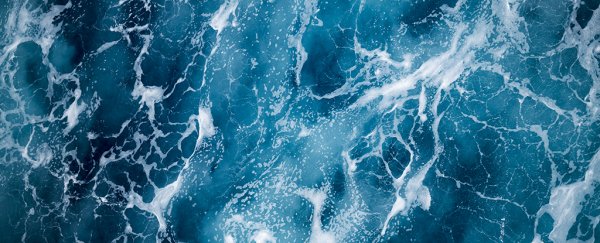We've still got so much of the undersea world to explore, not least the Mariana Trench – the deepest natural trench in the ocean – which goes down 10,994 metres (36,070 feet) in places. Now another fantastic find from this subaqueous abyss has just been revealed.
The most comprehensive microbial analysis of the trench to date has turned up a new type of bacteria that munches on compounds similar to those found in oil. Scientists have seen oil-chomping microorganisms before, but never at these depths.
Concentrations of this microbial plankton were found to be higher at the bottom of the Mariana Trench than anywhere else previously recorded on Earth, and that could give us a new insight into how life exists and thrives at such depths – where the pressure is the equivalent of 1,091 kilograms (172 stone) being pressed against a fingernail.
"We studied the samples that were brought back and identified a new group of hydrocarbon-degrading bacteria," says one of the researchers, Jonathan Todd from the University of East Anglia (UEA) in the UK.
"Hydrocarbons are organic compounds that are made of only hydrogen and carbon atoms, and they are found in many places, including crude oil and natural gas."
"So these types of microorganisms essentially eat compounds similar to those in oil and then use it for fuel. Similar microorganisms play a role in degrading oil spills in natural disasters such as BP's 2010 oil spill in the Gulf of Mexico."
Whether or not we'll be able to one day recruit these critters to help clean up oil spills remains to be seen, but the researchers are more interested in investigating how these bacteria feed so deep underwater – and maybe what feeds on them.
Part of the study's findings focus on the hydrocarbons that are keeping the microbes alive, and where they might have come from. Pollution we've caused is likely to be making its way into the trench, located in the western Pacific Ocean.
"We found that hydrocarbons exist as deep as 6,000 metres [19,685 feet] below the surface of the ocean and probably even deeper," says one of the team, Nikolai Pedentchouk from UEA. "A significant proportion of them probably derived from ocean surface pollution."
"To our surprise, we also identified biologically produced hydrocarbons in the ocean sediment at the bottom of the trench. This suggests that a unique microbial population is producing hydrocarbons in this environment."
The hydrocarbons the researchers were looking at have been spotted in algae on the ocean's surface before, but their presence this deep down in the water is a revelation. In lab experiments the team was able to confirm the bacteria could indeed consume hydrocarbons in extreme conditions.
The next step is to gather more information on these microbes and where their food might be coming from – probably both natural and unnatural sources. There might yet be other types of bacteria that are able to feed on hydrocarbon compounds in the same way.
"We know more about Mars than the deepest part of the ocean," says lead researcher Xiao-Hua Zhang, from the Ocean University in China.
The research has been published in Microbiome.
